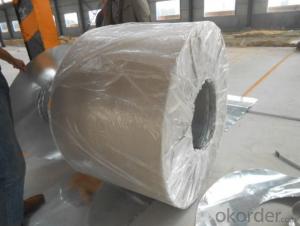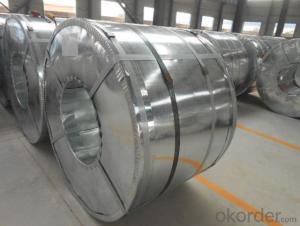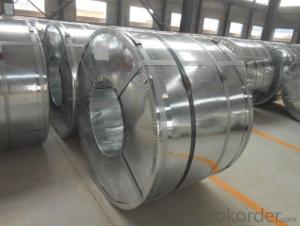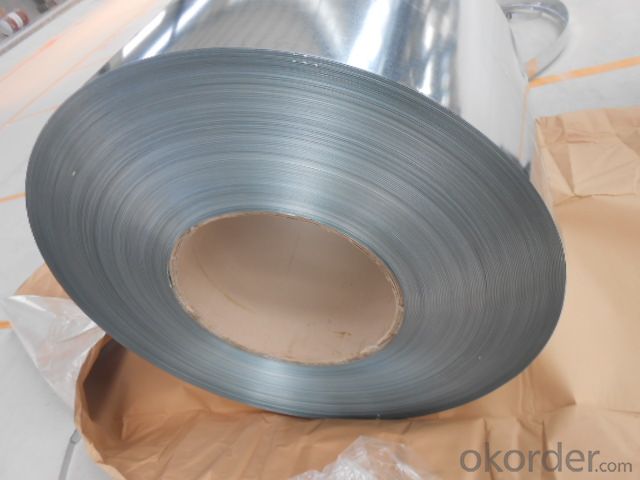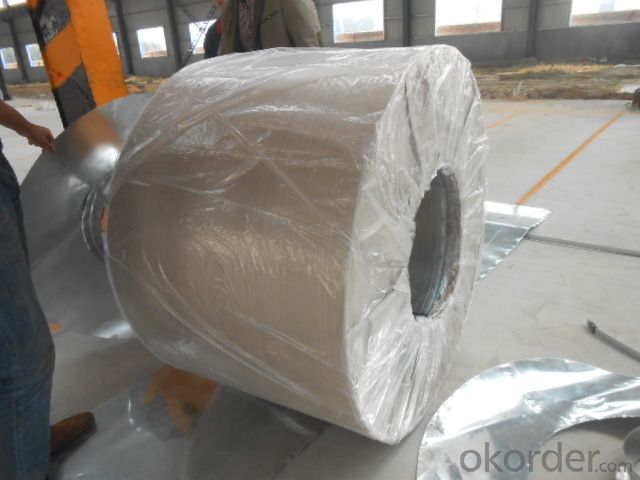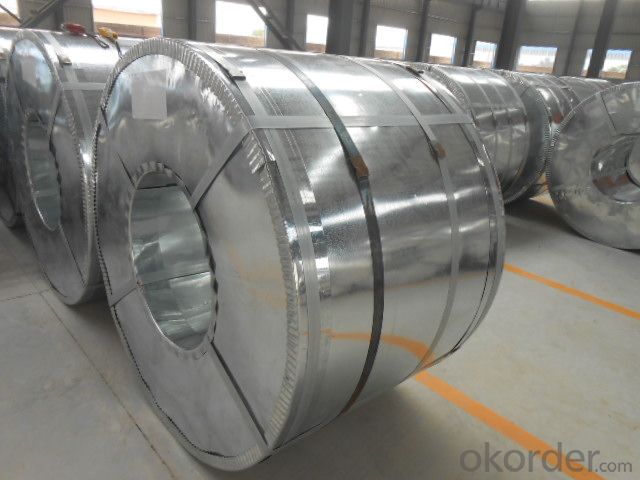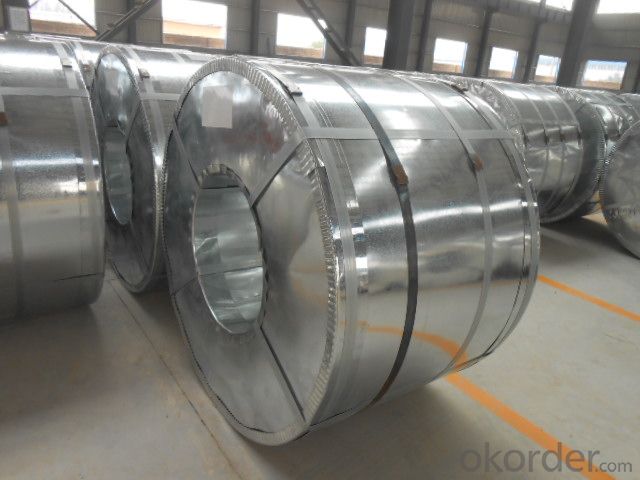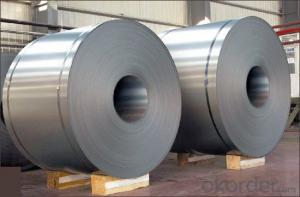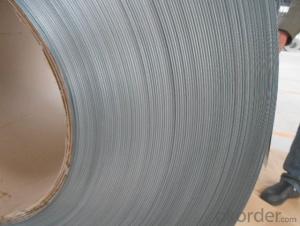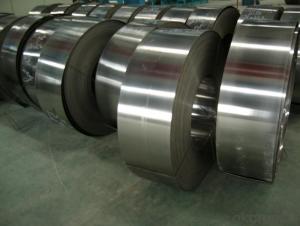JIS G 3302 GALVANIZED STEEL COILS WITH LOW PRICE
- Loading Port:
- Tianjin
- Payment Terms:
- TT OR LC
- Min Order Qty:
- 25.00 m.t.
- Supply Capability:
- 10000 m.t./month
OKorder Service Pledge
OKorder Financial Service
You Might Also Like
Prime Galvanized steel coil
Packaging & Delivery
Packaging Detail: seaworthy export package
Delivery Detail: on request
Specifications
1. more than 10 years’ experience on this field
2. advanced equipments
3. competitive price
4. soonest delivery
Product Description :
Commodity
Hot dip galvanized steel coil
Technical Standard: JIS 3302 / ASTM A653 / EN10143/ GB/T 2518
Grade:DX51D/ S250,280,320GD,SGCC,SGHC,SGH340,SGH400,SGH440,G450,G550
Types:Commercial / Drawing / Deep Drawing / Structural quality
Width: 900mm/1000mm/1219mm/1200mm/1220mm/1250mm
Thickness: 0.2mm~4.0mm
Type of coating: galvanized
Zinc coating: Z40-275g/m2,Z40-Z450g/m2
Surface treatment: zero spangle / regular spangle/ big spangle
ID coil: 508mm or 610mm
Coil weight: 3-10/MT per coil
Package: Properly packed for ocean freight exportation in 20''container
Application:: home appliances, constructions, building, machineries
Our Advantages :
1. Expertise:
More than 10 years of manufacture: we know how to properly handle every step of production.
2. Competitive price:
We can offer competitive prices to our customers.
3. Accuracy:
We have excellent technicians and leaders, which can ensure our products are exactly what you want.
4. Materials:
All galvanized steel coils are made of high-quality raw materials.
5. Certificate:
Our products are certified by ISO9001.
6. Productivity:
We have large-scales of production lines,, which can guarantee all your orders will be finished in earliest time.
Hr CGL Technical Process:
Coil loading-> uncoiling-> cutting-> welding-> entry accumulator-> Heating and deoxidization-> galvanizing-> air cooling->water quenching-> air dryer-> tension leveler-> Passivation->air dryer->exit accumulator-> oiling-> cutting-> recoiling->coil unloading-> packing
The furnace heating style: improved Sendzimir heating technology
Hourly output: max.76.3t/h
Process after coating: tension leveling, Passivation or oiling
Our Service
Our quality
Test Equipments of Prepainted Galvanized Steel Coil : Salt-spray tester; Atomic absorption spectrophotometer; Rockwell typer hardness tester; Tensile test machine; Metrohm titration; Laboratory Bend test machine.
Our packing
Properly packed for ocean freight exportation in 20''container, galvanized metal fluted rings on inner and outer edges, galvanized metal & waterproof paper wall protection disk, galvanized metal & waterproof paper around circumference.
R&D department
R&D department concentrates on researching and developing reliable products with best quality. The quality department test and control every process of production to guarantee the best quality of products
- Q: How are steel coils used in the production of construction machinery?
- Steel coils are used in the production of construction machinery as they provide the raw material needed for manufacturing various components, such as frames, beams, and structural elements. These coils are processed and shaped into the desired forms, ensuring the machinery's durability, strength, and stability.
- Q: Can steel coils be welded?
- Yes, steel coils can be welded. Welding is a common method used to join steel coils together, whether for manufacturing purposes or repair work.
- Q: How are steel coils processed for heat treatment?
- Steel coils are typically processed for heat treatment by first being uncoiled and then cleaned to remove any dirt or scale. The coils are then heated to a specific temperature, which is determined based on the desired properties of the steel. This temperature is maintained for a specific period of time to allow for the desired transformation of the steel's microstructure. After the heat treatment process is complete, the coils are cooled either slowly or rapidly, depending on the desired properties. This allows the steel to be hardened or softened as required. Finally, the coils are recoiled and prepared for further processing or shipment.
- Q: What are the different types of steel coatings for coils?
- There are several different types of steel coatings available for coils, each offering unique properties and benefits. Some of the most common types include: 1. Galvanized Coating: This is the most widely used type of steel coating for coils. Galvanized steel is coated with a layer of zinc, which provides excellent corrosion resistance and protection against rust. It is ideal for outdoor applications or environments with high moisture levels. 2. Galvannealed Coating: Galvannealed steel is a type of galvanized coating that undergoes additional heat treatment, resulting in a matte finish and improved paint adhesion. It offers enhanced corrosion resistance and is often used in automotive and construction industries. 3. Aluminized Coating: Aluminized steel is coated with a layer of aluminum, which provides excellent heat resistance and corrosion protection. It is commonly used in exhaust systems and other high-temperature applications. 4. Organic Coatings: Organic coatings, such as paint or powder coatings, can be applied to steel coils to provide additional protection against corrosion, as well as aesthetic appeal. These coatings come in a wide range of colors and can be customized to meet specific requirements. 5. Tin Coating: Tin-plated steel coils are coated with a layer of tin, which offers excellent solderability and corrosion resistance. It is commonly used in the manufacturing of cans and other food packaging materials. 6. Phosphate Coating: Phosphate coatings are typically applied as a pre-treatment before other coatings to improve adhesion and corrosion resistance. They create a thin, crystalline layer on the steel surface, promoting better paint or powder coating adhesion. These are just a few examples of the different types of steel coatings available for coils. The choice of coating will depend on the specific application requirements, considering factors such as corrosion resistance, heat resistance, paint adhesion, and aesthetic considerations.
- Q: How are steel coils used in the manufacturing of roofing materials?
- Steel coils are used in the manufacturing of roofing materials as they serve as a primary raw material for producing metal roofing sheets and tiles. These coils are processed through a series of steps such as cleaning, coating, and shaping to create durable and weather-resistant roofing products. The steel coils are rolled out and cut into the desired size and shape, ensuring uniformity and precision in the manufacturing process. These roofing materials made from steel coils offer exceptional strength, longevity, and protection against various weather conditions, making them a popular choice for residential and commercial buildings.
- Q: Can steel coils be stamped?
- Yes, steel coils can be stamped. Stamping is a common process used to shape and form steel coils into various shapes and sizes for different industrial applications.
- Q: What is the role of steel coils in the construction industry?
- Steel coils play a crucial role in the construction industry as they are used to manufacture various structural components and building materials. These coils are often transformed into beams, columns, rods, and other structural elements that provide strength and stability to buildings and infrastructure. Additionally, steel coils are also used to produce roofing, siding, and other cladding materials, making them an essential component in construction projects.
- Q: How are steel coils used in the production of electrical transformers?
- Steel coils are used in the production of electrical transformers as they provide the core structure for the transformer. The steel coils are wound with insulated copper wire to create the primary and secondary windings of the transformer, which allow for the transformation of electrical energy from one voltage level to another. The steel coil helps to conduct and distribute magnetic flux within the transformer, ensuring efficient energy transfer and reducing losses.
- Q: I personally don't believe the story of 8 guys who flew small planes can navigate passenger jets into buildings hundreds of miles away with that precision. It just doesn't make sense.I am wondering what the story surrounding the molten steel was, how could molten steel have been produced when fuel from the planes wasn't hot enough (it melts at 2850 degrees)?
- that's just it: there wasn't very much molten steel for the very reason you point out. Jet fuel burns at 800° to 1500°F. This is not hot enough to melt structural steel. However, engineers say that for the World Trade Center towers to collapse, their steel frames didn't need to melt, they just had to lose some of their structural strength. Steel will lose about half its strength at 1,200 degrees F. The steel will also become distorted when heat is not a uniform temperature. after the collapse, a LOT of folks took a look at the remains. the result was the conclusion that the fire caused the central core of the building to weaken. When the floors collapsed one on top of the other, the weight was too much for the weaked core to bear, causing the result we are all familiar with. hope this helps
- Q: What are the different methods of roll forming steel coils?
- There are several different methods of roll forming steel coils, each with its own unique characteristics and applications. Some of the most common methods include: 1. Traditional Roll Forming: This is the most widely used method and involves passing a continuous strip of steel through a series of rollers to gradually shape it into the desired profile. This method provides high precision and repeatability, making it suitable for producing complex shapes and profiles. 2. Pre-Punch and Cut: In this method, the steel strip is pre-punched with holes or slots before it is roll formed. This allows for easier cutting and shaping of the material during the forming process. Pre-punching and cutting can improve efficiency and reduce waste in certain applications. 3. Post-Punch and Cut: This method is similar to pre-punching and cutting, but the holes or slots are added after the roll forming process. This allows for more flexibility in creating custom shapes and designs, as the holes can be placed precisely where needed. 4. Post-Forming: In some cases, the steel strip may be first roll formed into a basic shape or profile and then further manipulated or formed after the initial roll forming process. This method allows for additional customization and can be used to create more complex geometries. 5. Progressive Roll Forming: This method involves passing the steel strip through a series of rollers in a continuous process, with each roller gradually adding a specific feature or forming a particular part of the final profile. Progressive roll forming is commonly used for long, continuous profiles with repetitive shapes. 6. Incremental Roll Forming: In this method, the steel strip is incrementally formed by a series of small movements of the rollers. This allows for greater flexibility in shaping complex profiles and can be particularly useful for producing prototypes or low-volume production runs. Overall, the choice of roll forming method depends on the specific requirements of the application, such as the desired shape, complexity, precision, and production volume. Each method offers its own advantages and limitations, and manufacturers often select the most appropriate method based on these factors.
Send your message to us
JIS G 3302 GALVANIZED STEEL COILS WITH LOW PRICE
- Loading Port:
- Tianjin
- Payment Terms:
- TT OR LC
- Min Order Qty:
- 25.00 m.t.
- Supply Capability:
- 10000 m.t./month
OKorder Service Pledge
OKorder Financial Service
Similar products
Hot products
Hot Searches
Related keywords

